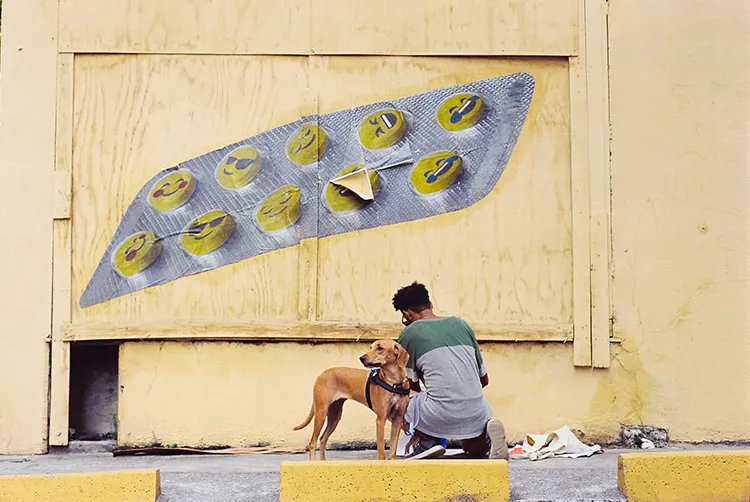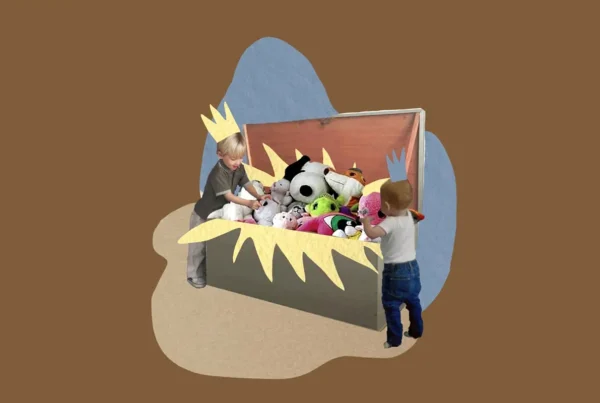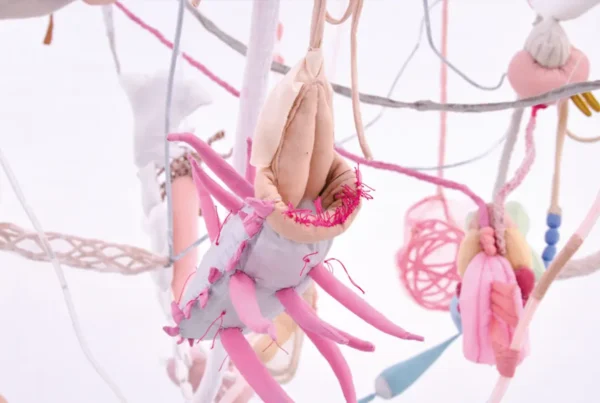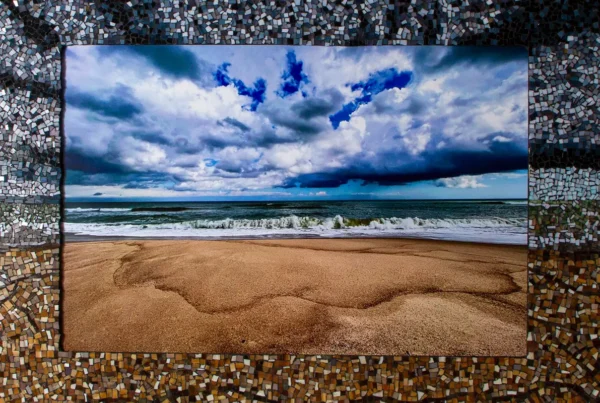“I like to think of myself as a forger of images, mixing them until the viewer no longer knows what is ‘real’.”
Bridging Communication and Art: The Foundation of Alberto Pereira’s Vision
Alberto Pereira, a visual artist and communicator from Rio de Janeiro, Brazil, stands at the intersection of graphic design and social communication. With formal training in both disciplines, he uses collage and posters as his principal mediums, crafting a unique artistic narrative. Pereira refers to himself as a “forger of images,” a term that encapsulates his practice of blending visuals until their origins blur into ambiguity. His work seeks to challenge perceptions of truth, encouraging viewers to question the authenticity and origins of what they see.
Pereira’s artistic journey began not with an epiphany but through a visceral need to channel his emotions—frustration, joy, trauma, and everything in between. His introduction to street art was fueled by civic outrage over the rising costs of public transportation in Rio de Janeiro. He responded by pasting sardine can imagery, juxtaposed with the Rio Subway logo, across train stations and cars. This simple yet evocative act laid the groundwork for his approach: transforming everyday symbols into potent, provocative statements.
His creative process continues to evolve, yet a unifying thread runs through his work—identity and language. Pereira dissects and recontextualizes images, challenging their conventional meanings and exploring themes that resonate universally. Presently, his art examines humanity’s consumption patterns, technology’s pervasive influence, and the societal structures of race, class, and urban environments.
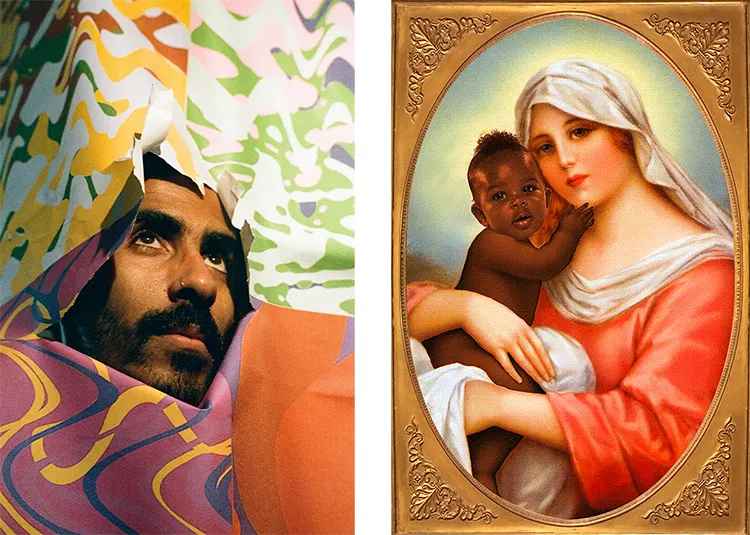
Alberto Pereira: The Craft of Collage and the Art of Focus
Pereira’s artistic process demands more than physical tools—it hinges on what he deems the most essential element: time. Quality time, imbued with attention and presence, forms the backbone of his creative endeavors. His workspace is outfitted with a computer, pen, and note-taking tools like notebooks or apps such as Notion, creating an environment conducive to ideation and execution.
Despite his ability to immerse himself in hours of hyper-focused creative work, distractions from the digital realm remain a challenge. Administrative tasks—emails, reports, meetings—often divert his attention, pulling him into an endless web of browser tabs and notifications. Pereira employs a simple strategy to combat this: tackling the day’s most tedious tasks first. However, he emphasizes the importance of recognizing when to step away and reset. For him, taking breaks is not a sign of weakness but a vital act of self-preservation and mental clarity.
His practice of collage extends beyond digital techniques, as he also collects paper scraps, advertisements, and textures from urban streets. This tactile approach reflects his connection to physical materials and the narratives they hold. His experimentation includes transforming used street posters into canvases, sculptures, and modular objects in a series he calls Pele de Rua (“Street Skin”). These innovative explorations showcase his dedication to reimagining how materials and meanings intersect in artistic expression.
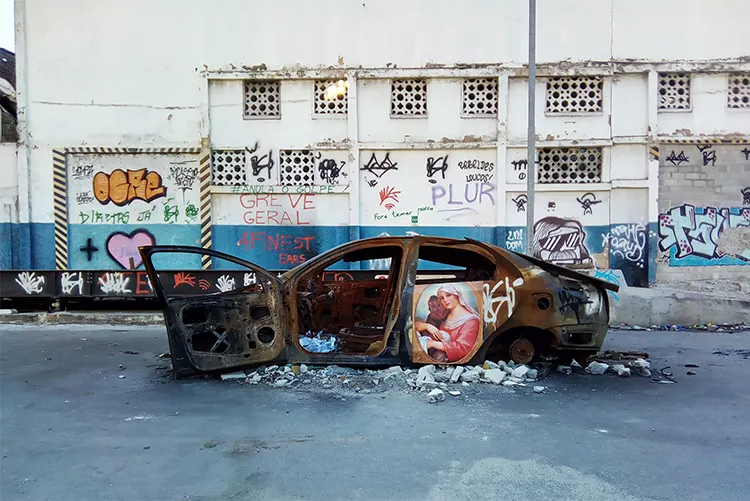
The Ordinary as Inspiration: Everyday Influences on Alberto Pereira
Pereira draws much of his inspiration from the seemingly mundane. Urban landscapes, street signs, packaging, and even printed advertisements play a pivotal role in shaping his visual vocabulary. To him, these everyday elements carry an understated power, connecting art with the rhythms of daily life. This grounded approach intertwines with his admiration for figures in Brazilian popular music, particularly Gilberto Gil and Arnaldo Antunes, whose creative versatility mirrors Pereira’s own multidisciplinary ethos.
In the visual arts, Pereira finds resonance with the work of Luba Lukova, OsGemeos, and René Magritte. Lukova’s ability to distill complex ideas into simple imagery, OsGemeos’ imaginative freedom, and Magritte’s irreverent approach to reality all inform his creative process. Pereira often begins his artistic explorations with written words—phrases or poems that eventually take shape as visual compositions. This melding of language and imagery underscores his belief in art’s power to transcend boundaries.
One of Pereira’s most significant works, Jesus Pretinho (Little Black Jesus), embodies this philosophy. A street poster that he takes to every place he visits, the piece has transcended its origins to become a cultural artifact. It adorns streets, homes, car stickers, church entrances, and even cell phone screens, resonating across diverse audiences. Pereira views this as a testament to the image’s symbolic potency and its ability to exist independently of the artist, weaving into the fabric of people’s lives and environments.
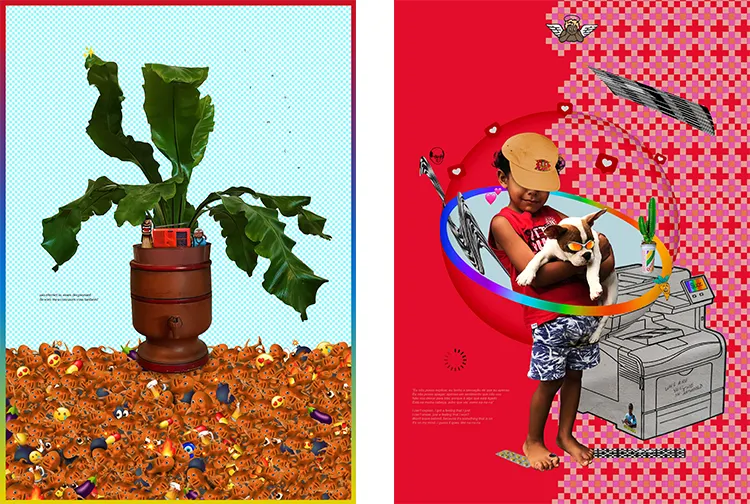
Alberto Pereira: Immersive Dreams and Future Aspirations
Pereira’s artistry is rooted in innovation and expansion, and his ambitions reflect a desire to push boundaries. One dream is to create a publication chronicling eight years of Jesus Pretinho collages. Such a project would not only document his artistic journey but also highlight the evolving narratives surrounding this iconic work.
Another aspiration is to construct an immersive environment based on his current artistic research. Pereira envisions a space where audiences can step directly into the conceptual worlds that inform his creations. This experience would go beyond traditional exhibitions, offering a multidimensional format that mirrors his practice of blending materials, images, and ideas.
As his career continues to flourish, Pereira remains committed to exploring new mediums and modes of expression. In addition to his ongoing experiments with video, he continues to refine his artistic language, ensuring that his work remains both deeply personal and profoundly universal. Through his unique lens, he invites the world to reimagine the everyday, challenging preconceived notions and opening up new pathways of understanding.
